Series
Twelve tuning forks, with ivory hammer, made by Dr. R. Koenig
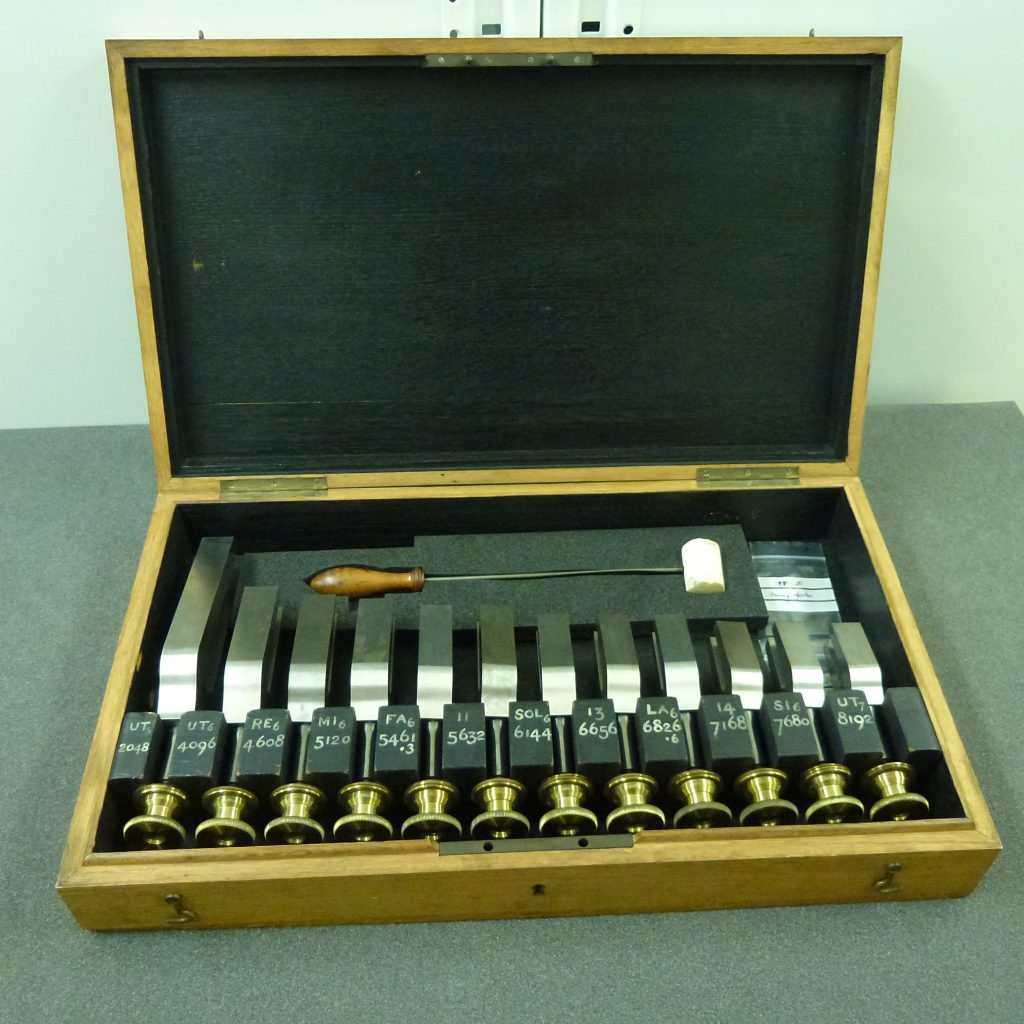
Series Items
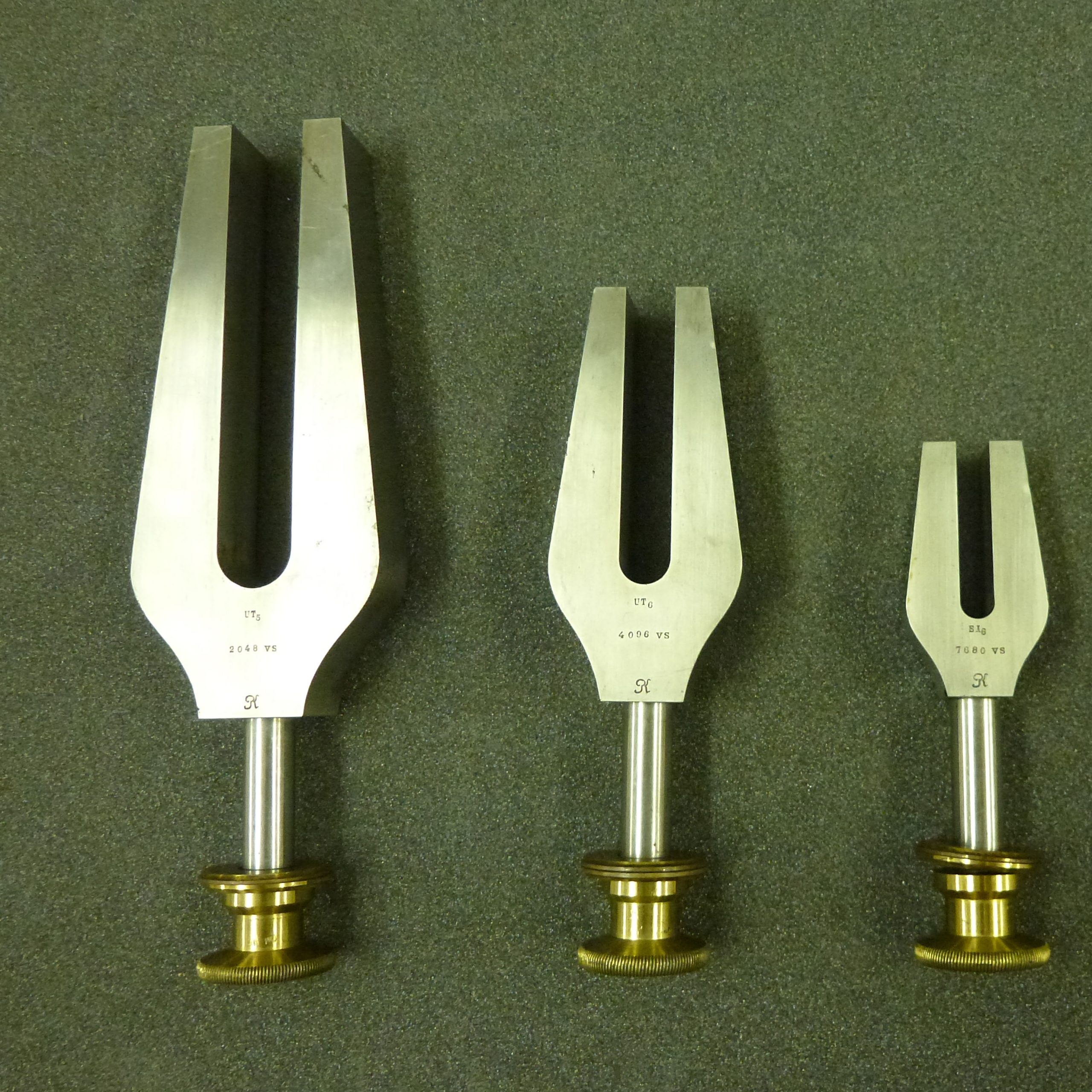
Tuning fork by Dr. R. Koenig: UT₅ Artefacts
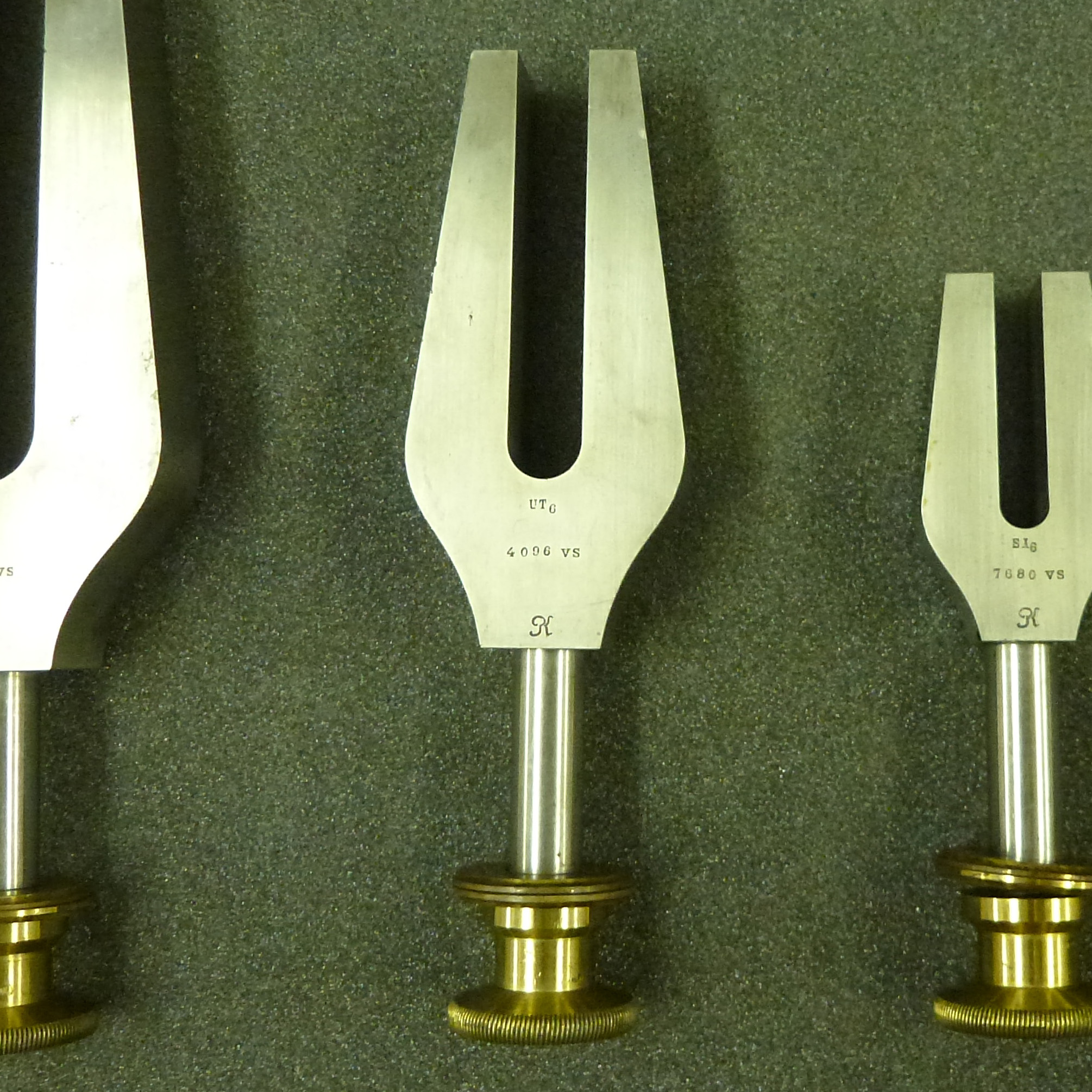
Tuning fork by Dr. R. Koenig: UT₆ Artefacts
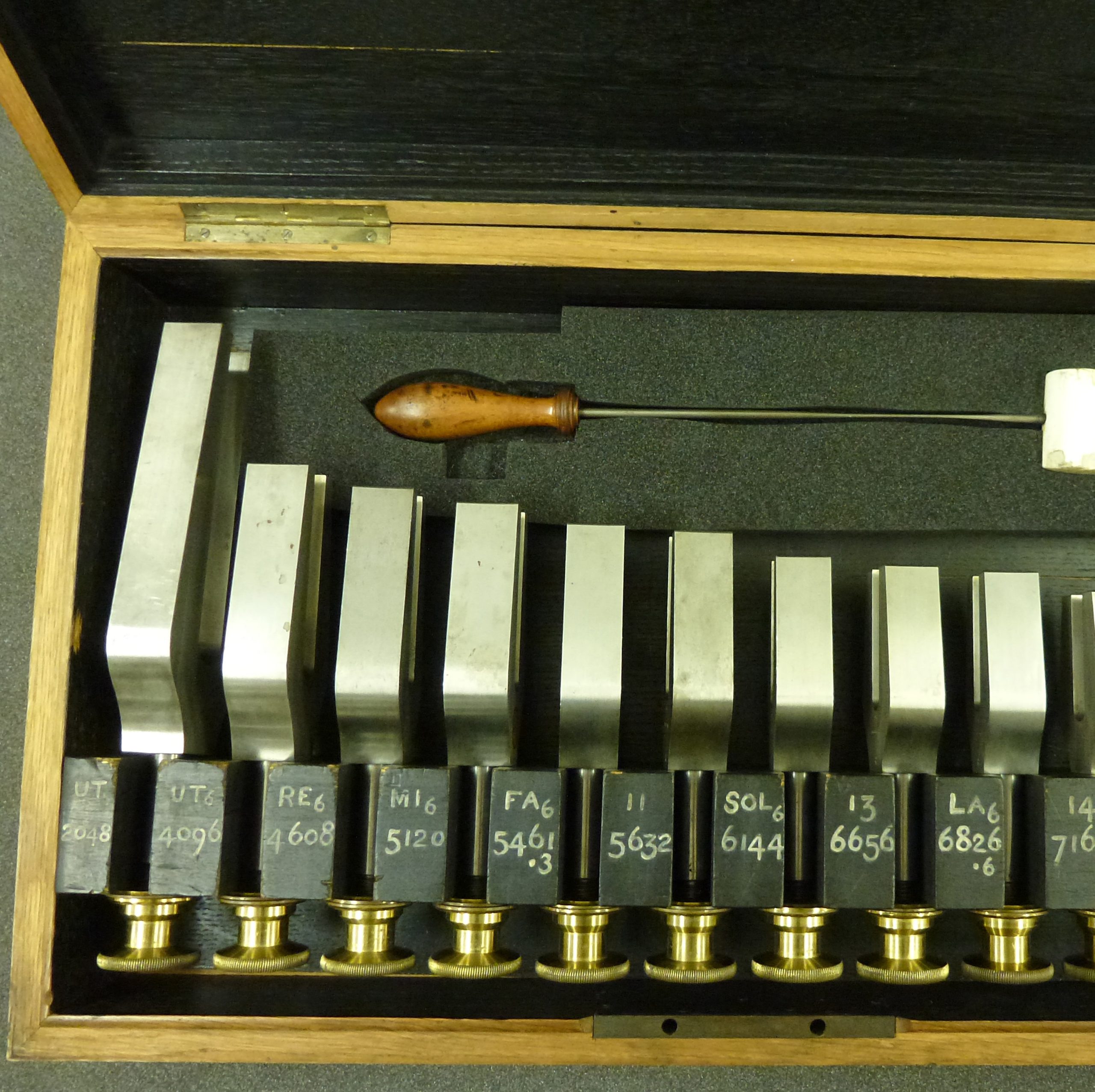
Tuning fork by Dr. R. Koenig: RE₆ Artefacts
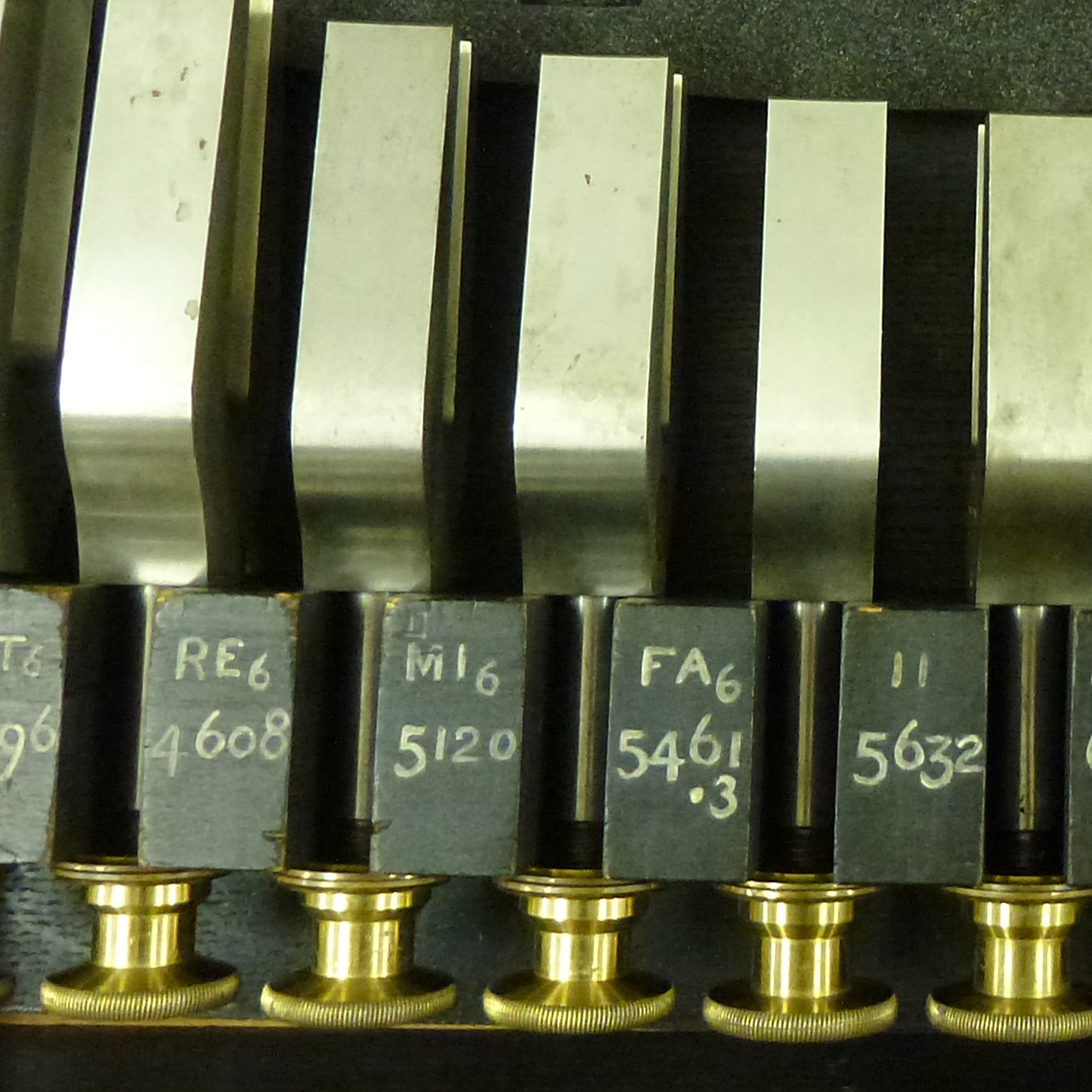
Tuning fork by Dr. R. Koenig: MI₆ Artefacts
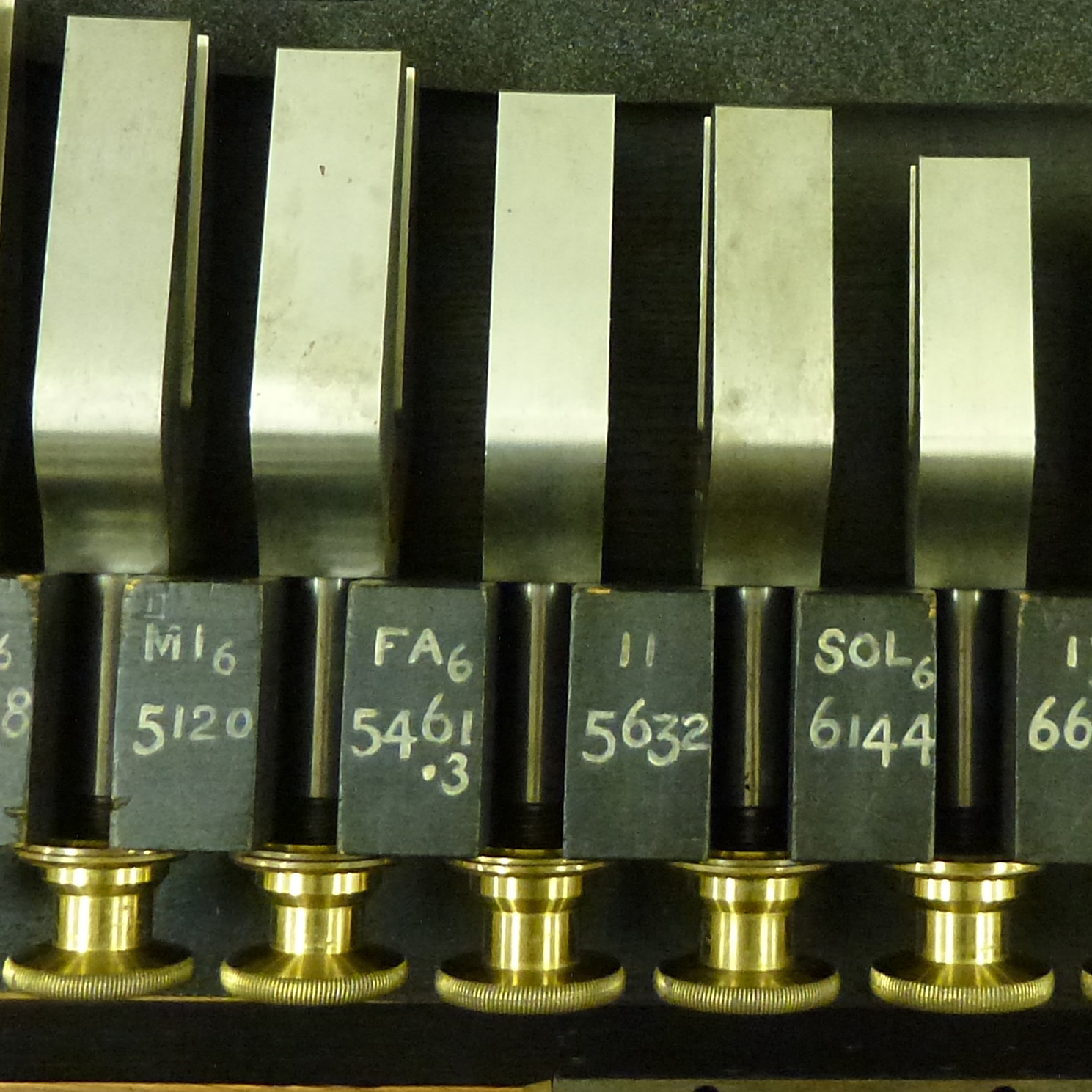
Tuning fork by Dr. R. Koenig: FA₆ Artefacts
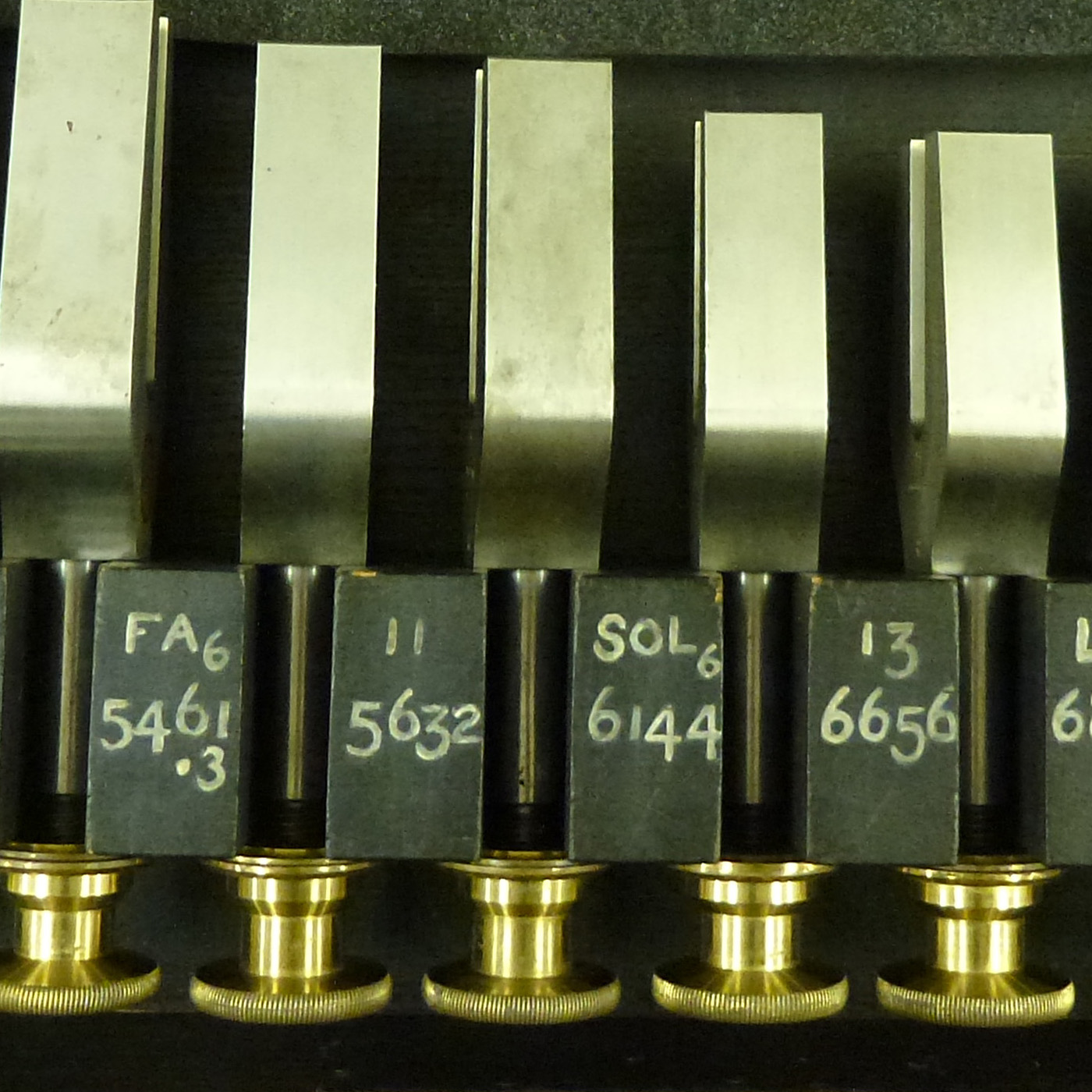
Tuning fork by Dr. R. Koenig: 11 Artefacts
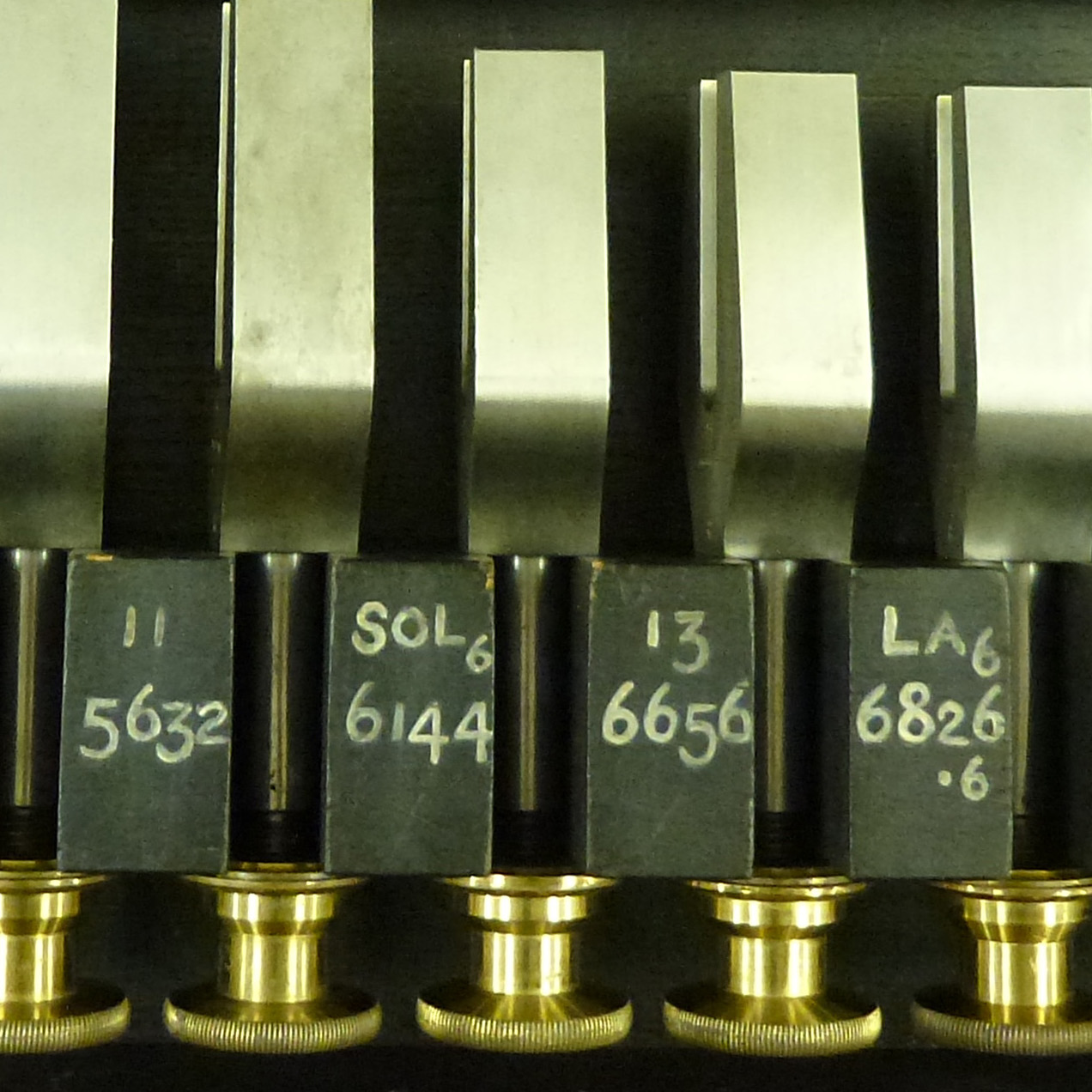
Tuning fork by Dr. R. Koenig: SOL₆ Artefacts
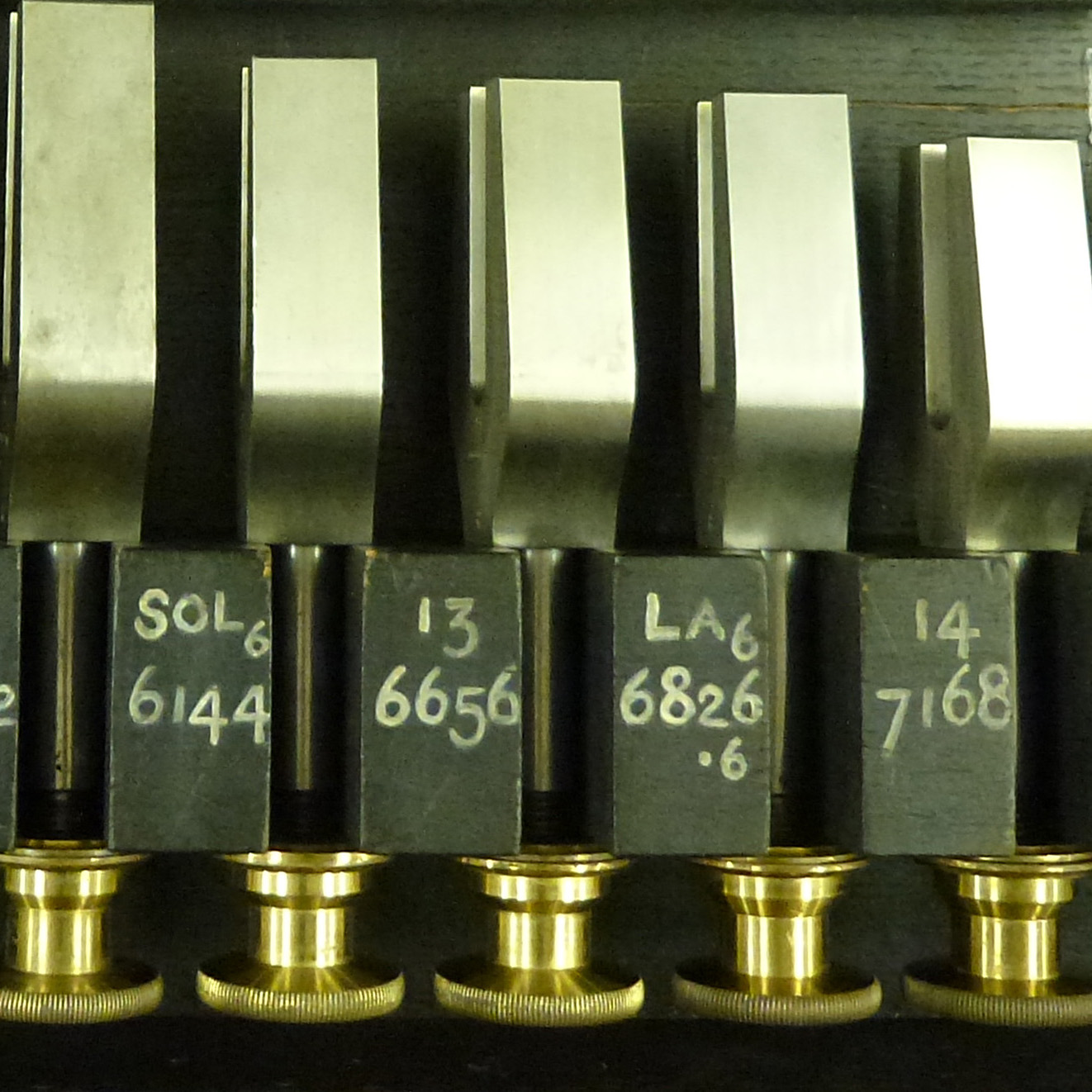
Tuning fork by Dr. R. Koenig: 13 Artefacts
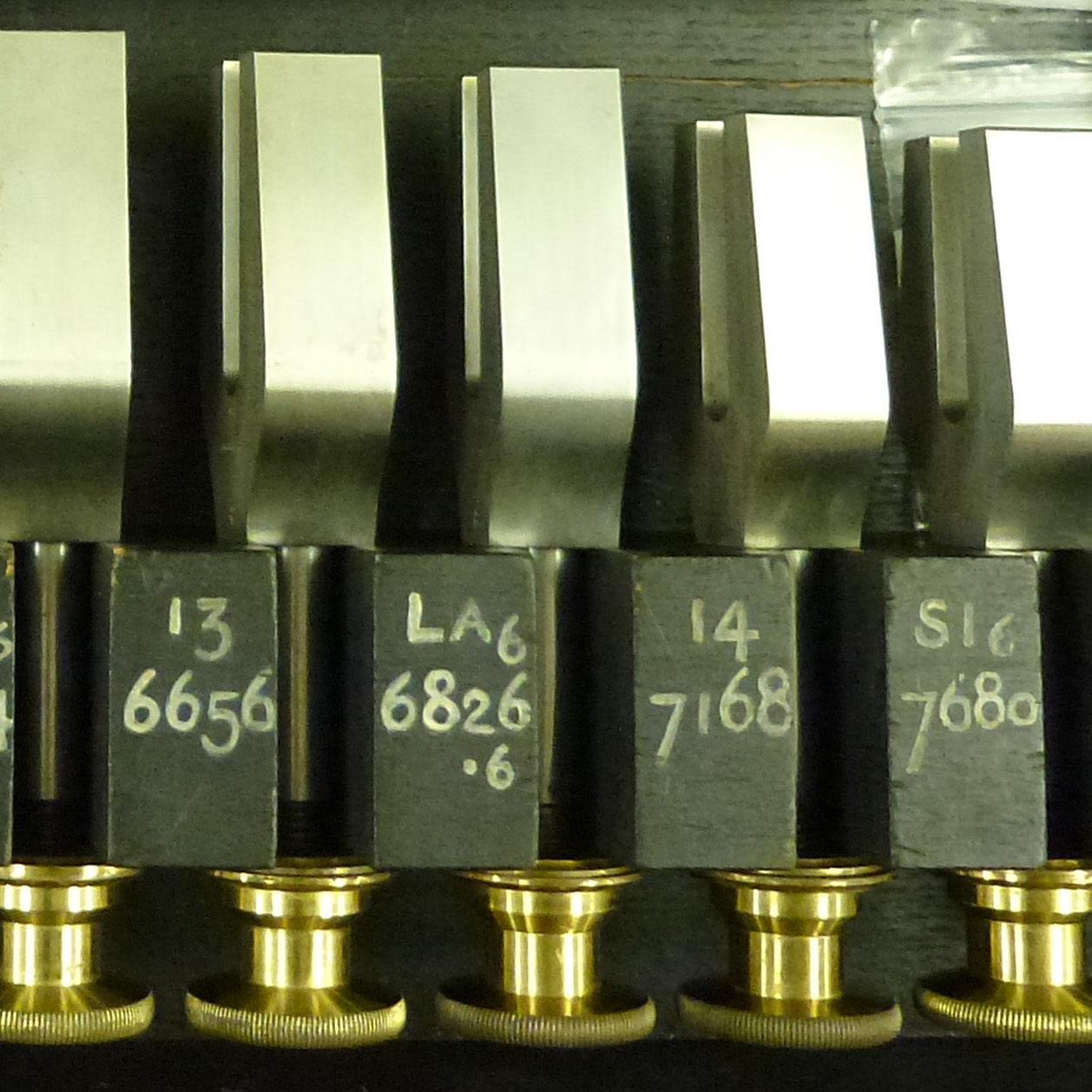
Tuning fork by Dr. R. Koenig: LA₆ Artefacts

Tuning fork by Dr. R. Koenig: 14 Artefacts
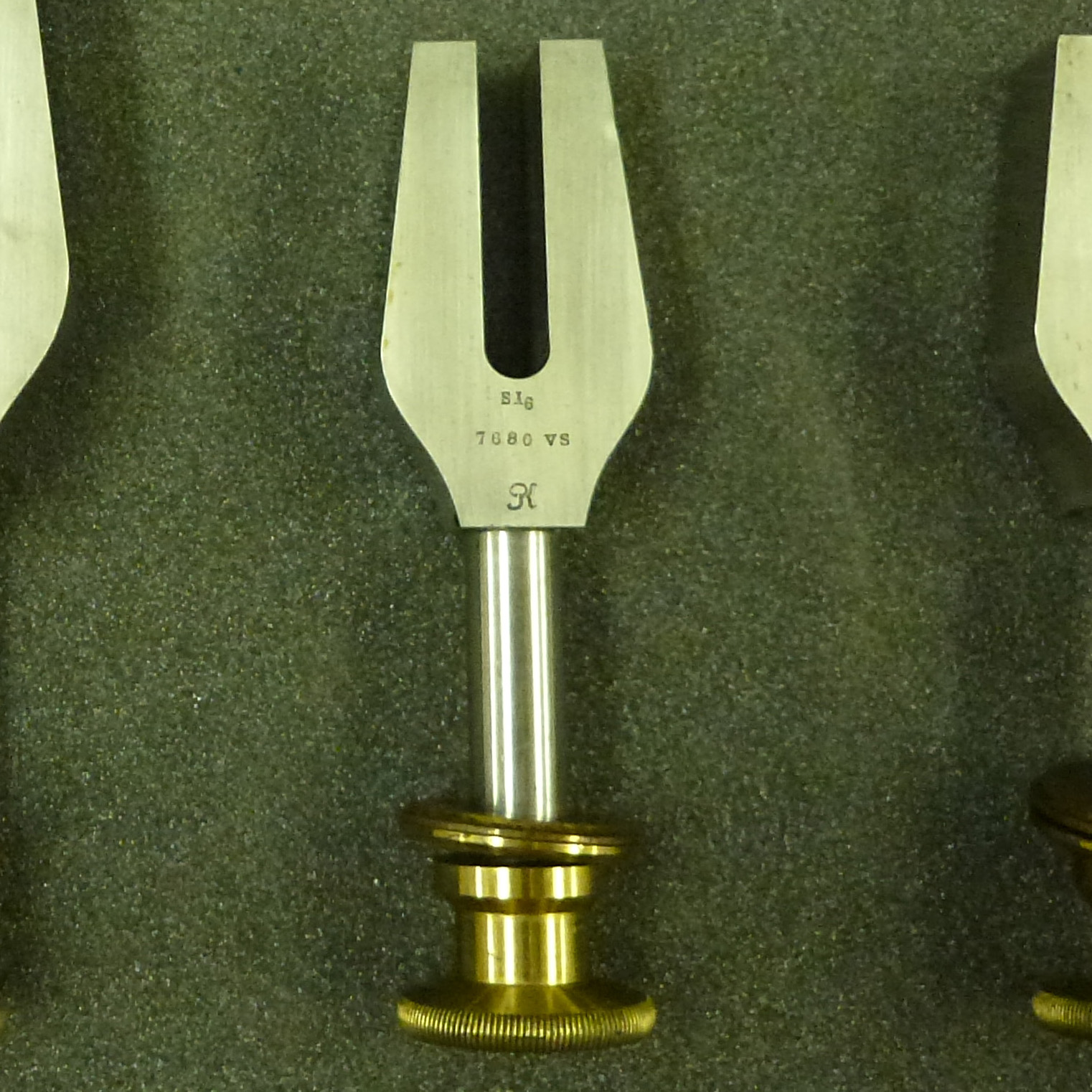
Tuning fork by Dr. R. Koenig: SI₆ Artefacts
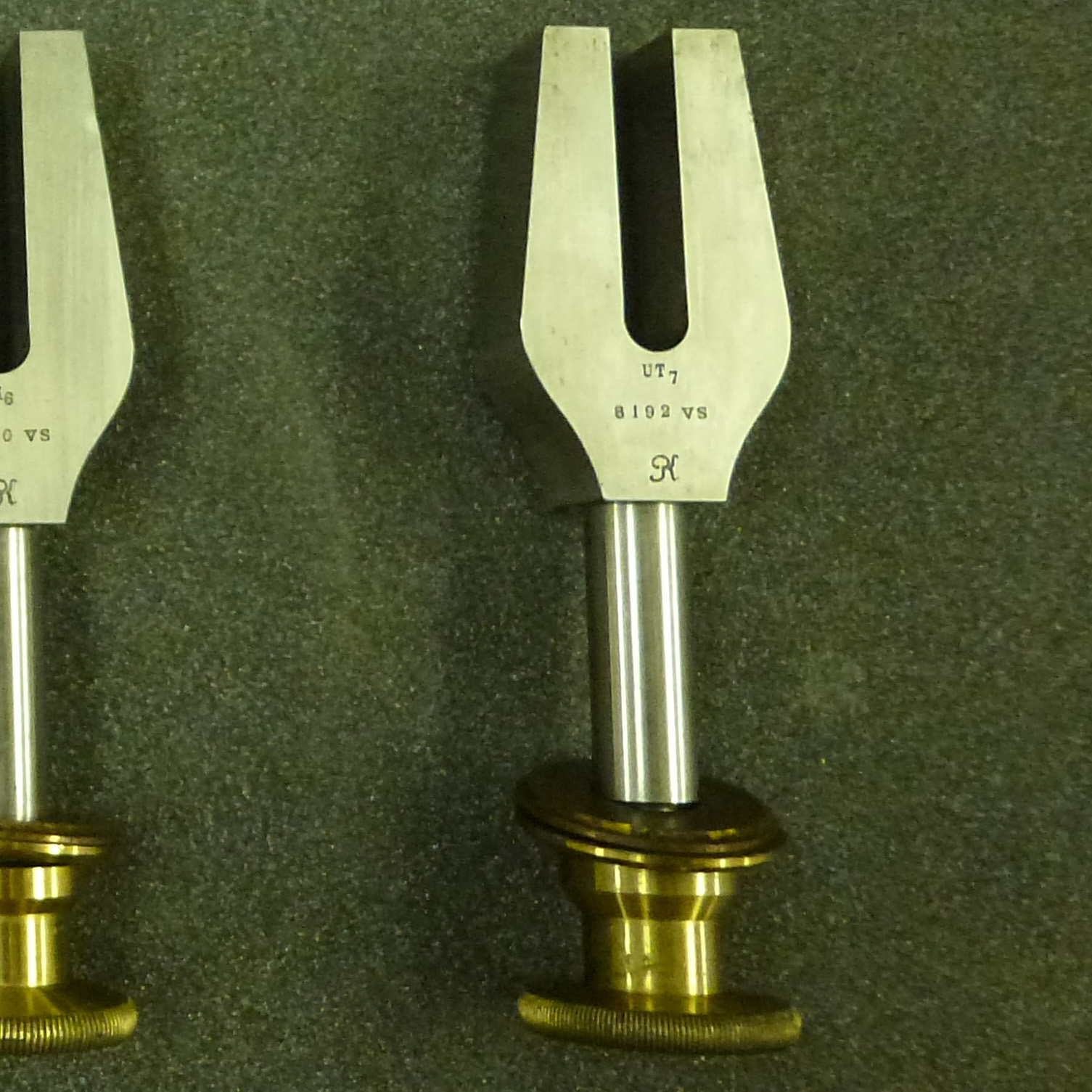
Tuning fork by Dr. R. Koenig: UT₇ Artefacts
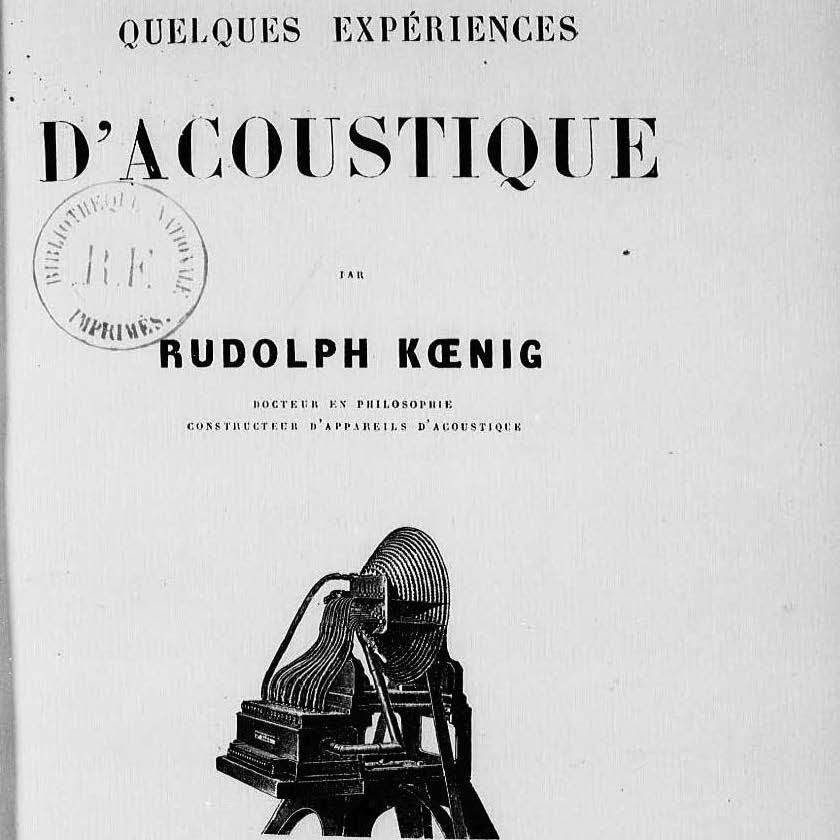
Quelques expériences d’acoustique Texts
Twelve tuning forks, with ivory hammer, made by Dr. R. Koenig
The forks give the notes ciii, civ, div, eiv, fiv, the 11th harmonic of c1, the 13th harmonic of c1, aiv, the 14th harmonic of c1, bv, and cv (ciii and cv have vibration frequencies of 1024 and 4096 respectively).
These forks are constructed to prove the following law:
The beats m and n –– m of the intervals n: hn + m, if they are sufficiently numerous and intense, become sounds. These sounds produced by the primary beats, if they are sufficiently near unison, or a harmonic interval, give rise to secondary beats, which in turn, if sufficiently rapid and intense, give rise to the sounds of secondary beats.
Experiments with this and similar apparatus led Dr. Koenig to doubt the existence of the differential and summational tones postulated by Helmholtz.
See Koenig, R. Quelques expériences d’acoustique (Paris, 1882), 102 and 123.
N.B. The above notes, found in the Museum’s technical file T/1890-20, probably date from the time of the Museum’s acquisition of the tuning forks in 1890.
© image: Dr. Aleksander Kolkowski
© 2015 – 2025 Humboldt-Universität zu Berlin





